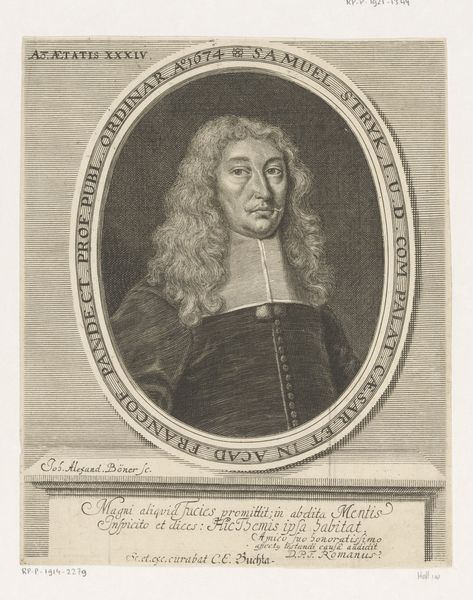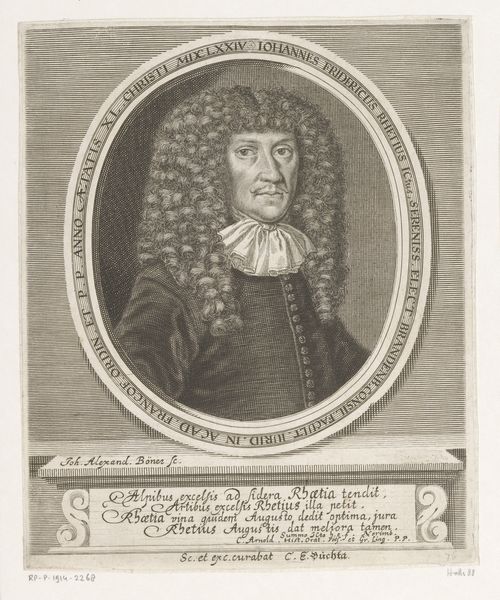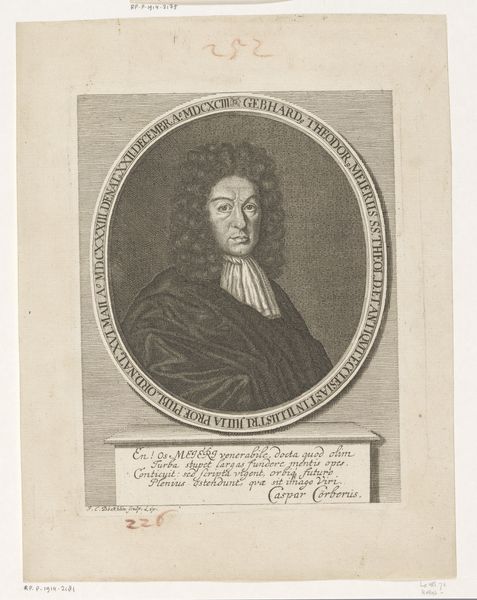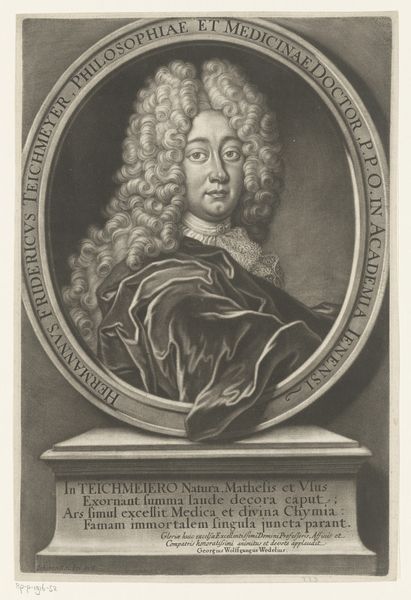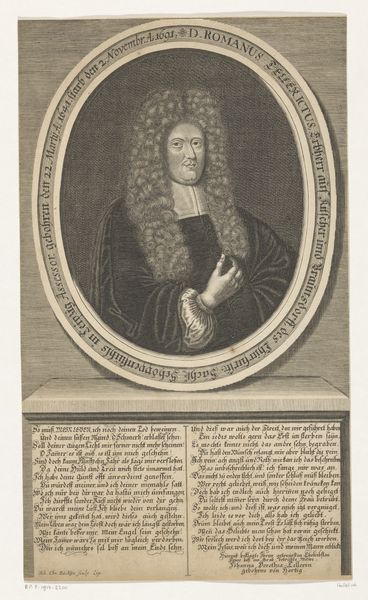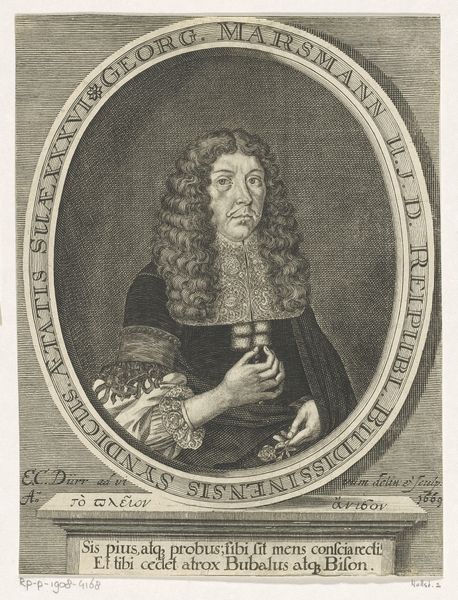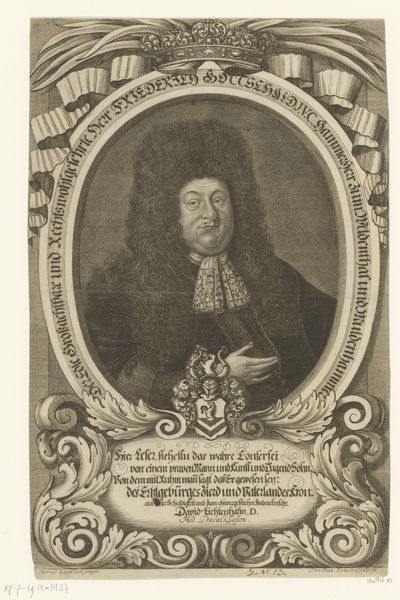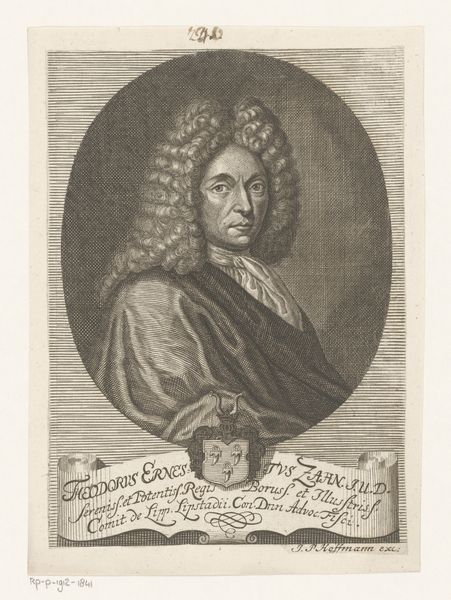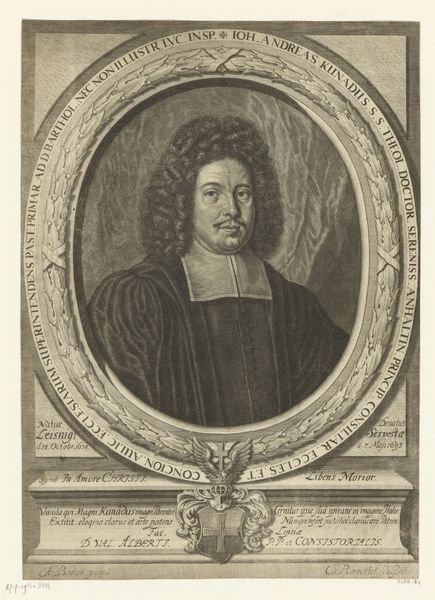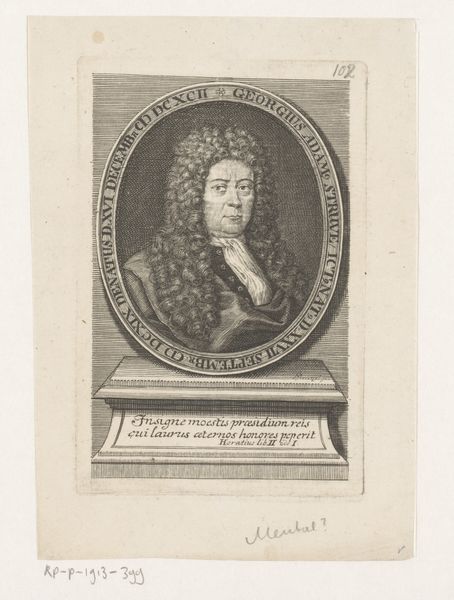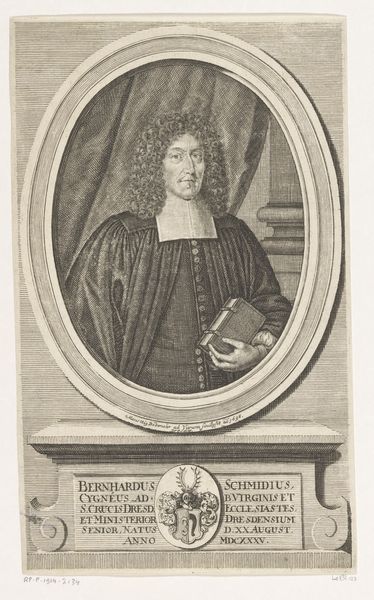
print, engraving
#
portrait
#
baroque
# print
#
figuration
#
line
#
engraving
Dimensions: height 202 mm, width 140 mm
Copyright: Rijks Museum: Open Domain
Curator: Look at this, Editor, "Portret van Johann Friedrich Heunisch" by Johann Christoph Boecklin, engraved in 1698. It’s part of the Rijksmuseum's collection. Editor: Immediately, the intensity of the gaze and ornate detail feels like a powerful assertion of identity. What kind of cultural figure was Heunisch? Curator: The portrait is a line engraving, fairly typical for the late Baroque period. Boecklin emphasizes Heunisch's status—we know from the text encircling the image that Heunisch was a professor and a church official, an Ecclesiastes at the Gymnasium in Schweinfurt. Editor: So, this wasn’t simply about immortalizing a face; it was enshrining social power and religious authority. The circular frame and the Latin inscriptions reinforce this sense of a self-contained, elevated world, which was inherently inaccessible to many. Curator: Exactly. Consider the visual language of the time: his elaborate wig, the carefully rendered folds of his garments, each a symbolic representation of his learning and piety. The mole on his face, perhaps intentionally depicted as a sign of individuality, yet also perfectly fitting in its era! Editor: True. But isn't there a contradiction there? The mole adds a touch of individuality, yes, yet this ‘individual’ is framed within a rigidly hierarchical society. What’s being ‘preserved’ here through art? Individual legacy? Or ideological continuity? Curator: Maybe it’s both. Perhaps Boecklin wants us to see Heunisch as a unique individual who also embodies certain esteemed virtues, upholding an established order. The image subtly hints that individuality thrives *within* societal constraints, not outside of them. Editor: The choice of print as a medium also signals accessibility, at least for a certain class. Engravings could be reproduced and distributed, expanding Heunisch's influence beyond his immediate circle. Curator: And we shouldn't overlook the deliberate use of Latin, embedding the portrait within the intellectual traditions of the era and signifying a deliberate continuity with the classical past. The print encapsulates the prevailing socio-religious world of 17th-century Europe. Editor: For me, considering all that we’ve discussed, looking at it again – the Baroque era comes through crystal clear! So many social narratives interwoven into a relatively small format. Curator: Absolutely. It speaks volumes about identity, status, and representation. A single image containing multitudes of socio-historical threads.
Comments
No comments
Be the first to comment and join the conversation on the ultimate creative platform.

